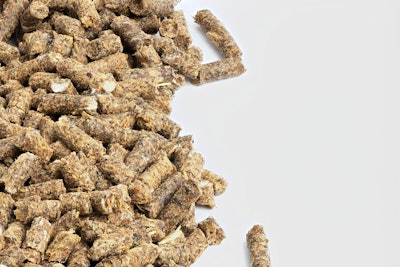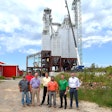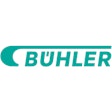
The pelleting machine is the heart of a feed mill, responsible for turning raw feed ingredients into uniform, dense pellets that optimize feed intake and reduce waste. However, like any equipment, pelleting machines have a finite lifespan and can become inefficient or even counterproductive when they’re no longer performing at their best. Here are the key signs that it may be time to replace your feed mill’s pelleting machine.
Declining pellet quality
When a pelleting machine begins to wear out, one of the first indicators is a gradual but significant decline in pellet quality. Common issues include:
- Crumbly pellets: This indicates that the machine is no longer applying adequate pressure during compression.
- Inconsistent pellet size: Worn dies and rollers can produce uneven pellets, reducing feed uniformity and making it less appealing to animals.
- Excessive fines: A significant increase in fines or broken pellets suggests the machine is struggling to bind ingredients effectively.
Increased energy consumption
Older pelleting machines often consume more energy as their components degrade. You may notice higher energy bills without a corresponding increase in production. Worn dies and rollers can cause the motor to work harder, leading to inefficiency and elevated operational costs. With modern energy costs skyrocketing, having an energy-efficient pellet mill may become the defining factor between breaking even or closing down.
Frequent repairs and downtime
If your maintenance team is spending more time repairing the pelleting machine than running it, it’s a clear sign of wear and tear. Frequent breakdowns lead to production delays and increase labor costs, not to mention the increased possibility of work accidents. When repair costs approach the price of a new machine, replacement is clearly a more cost-effective solution. However, this is not always the expected decision-making process as capital and credit are often lacking, whereas repairs may appear more appealing from this perspective.
Decreased throughput
A decline in the machine’s output is a red flag. If your pelleting machine is no longer capable of meeting production targets despite running at full capacity, this could be due to:
- Worn dies and rollers
- Inadequate compression caused by weakened components
- Reduced motor efficiency
Falling behind on production quotas can disrupt feed delivery schedules and harm your mill’s reputation. However, before anything else, it should be made sure that changes in formulation are not the real culprit behind decreased throughput. In this case, other remedies exist.
Noisy operation
Modern pelleting machines are designed to operate with minimal noise. An older machine producing excessive noise during operation often indicates mechanical issues such as misaligned rollers, worn bearings or damaged components. Ignoring these warning signs could lead to catastrophic failures, not to mention an unhealthy working environment.
Difficulty in sourcing spare parts
As manufacturers release updated models, spare parts for older machines can become harder to find or more expensive. If obtaining replacement parts has become a challenge, it’s a sign that your machine is nearing obsolescence.
Technological obsolescence
The feed milling industry is evolving, and newer pelleting machines come equipped with advanced features such as:
- Automated monitoring and control systems
- Higher energy efficiency
- Enhanced safety mechanisms
- Improved pellet uniformity and durability
If your machine lacks these features, you could be missing out on significant efficiency gains and cost savings. Again, capital and credit can hamper the move to a higher-end pelleting machine.
Safety concerns
Older machines may not meet modern safety standards, posing a risk to workers. Frayed wiring, worn belts and unstable components can lead to accidents. Upgrading to a newer model ensures compliance with safety regulations and protects your workforce. To this end, it is also advisable to work with local authorities to ensure your existing machinery already meets standard safety regulations.
When replacement becomes inevitable
Replacing a pelleting machine is a significant investment, but it’s essential for maintaining efficiency, product quality and profitability. Here are some tips to make the transition smooth:
- Conduct a cost-benefit analysis: Compare the cost of repairs and inefficiencies against the investment in a new machine. Do not ignore the cost of capital and credit.
- Evaluate production needs: Ensure the new machine has the capacity and features to meet your mill’s current and future demands, especially if you plan on expanding production.
- Plan for installation: Schedule replacement during a low-demand period to minimize disruption to production. Always double the time calculated to have the new machine up and running.
A well-functioning pelleting machine is critical to the success of a feed mill. Monitoring the signs of wear and proactively replacing outdated equipment can save money, reduce downtime and improve the quality of your feed products. If you’ve noticed any of the signs listed above, it might be time to invest in a new pelleting machine that can keep your operation running smoothly and profitably.

















